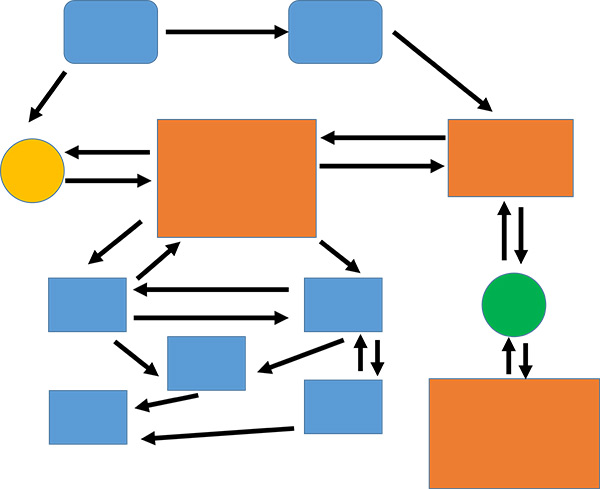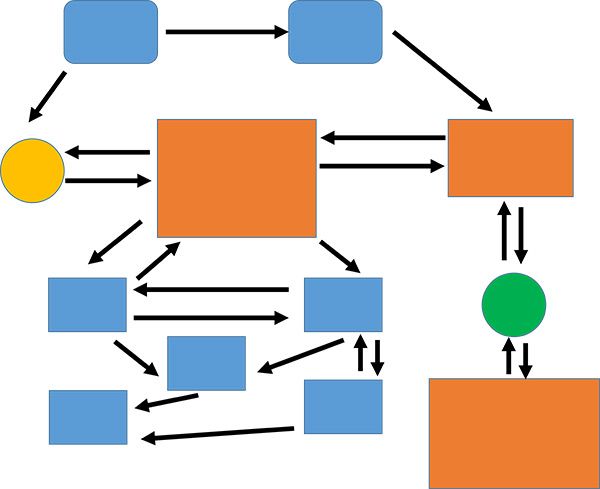 Change is hard for most people. There are a variety of reasons why change is hard, from our inherent need for a sense of security to having to deal with too much change at once to not following a process to increase the change’s likelihood of success. I know I am personally not looking forward to having to adapt my hyper-productive processes when Windows 8 is released and I may have to re-learn or find new ways to do things efficiently.
Change is hard for most people. There are a variety of reasons why change is hard, from our inherent need for a sense of security to having to deal with too much change at once to not following a process to increase the change’s likelihood of success. I know I am personally not looking forward to having to adapt my hyper-productive processes when Windows 8 is released and I may have to re-learn or find new ways to do things efficiently.
As Business Analysts, we are often involved in projects or initiatives that cause a great deal of change within an organization. In some cases we are put on the front lines of the change, whether it is gathering requirements from skeptical stakeholders to supporting the review of a solution that was put in place too quickly and is now meeting strong resistance. In order to get our jobs done effectively in such situations, we need to understand how change is perceived by individuals and know how to help guide people through change within the context of our role.
All Change is Personal
In order to help people work through changes, we need to first understand that change occurs at the individual level. The overall organizational change that occurs is a result of the changes made by each individual. Every person will react to the same change in a different way based on their culture, worldview, understanding of the change, relevance of the change to their work, what is currently going on in their lives and other factors. On large change projects you might not be able to get a full picture of why each person reacts negatively to a change, but it is important to realize that often it is not about the nature of the change itself but it could be for many other reasons. Performing a root cause analysis with certain individuals can be helpful to ensure they get on board with the change.
Prosci, a leading change management research firm, has developed a model called ADKAR. ADKAR stands for Awareness, Desire, Knowledge, Ability and Reinforcement. It describes the sequential steps each person needs to go through in order to be able to accept and support a change. If a person does not have sufficient awareness about why the change is needed, it’s hard for them to support efforts taken to implement the change, even if they would otherwise have a desire to help out. Similarly, if someone has the ability to implement a change but doesn’t have enough knowledge about the particular actions they must take to make the change occur, may exhibit hesitation or fear towards the change. Business Analysts can leverage the ADKAR model to quickly assess stakeholders when they are encountering resistance and identify the step in the model’s process where the individual might be having difficulty.
The Implementation Team Does Not Lead the Change
On almost every project I’ve worked on the group that appears to lead the change is the project team themselves. The Project Manager is at the forefront engaging stakeholders along with the Business Analysts; working to define the need, establish the requirements and support the solution through implementation. The project’s sponsor and steering committee are in the background, reading reports and dealing with escalated issues but aside from their initial announcement about the project they rarely directly interact with the people who are impacted by the change.
Some literature has taken the term ‘change agent’ to mean ‘the person or group leading or driving the change’. This is not consistent with the term ‘agent’, which is defined as ‘a person who acts on behalf of another’. With this definition, the project team is the change agent, but that does not mean that they are the people who should be leading the change. The person or group who needs to drive the change are the true leaders of the change.
Prosci’s studies have found that active and visible leadership from the executive sponsor is the leading contributor to a successful change. People within an organization naturally look to their leadership for guidance on the importance of activities and to understand the need to perform actions. If the leaders behind the change are not seen to be continually engaged and supportive of the process, the change faces a higher likelihood of failure, as people will naturally believe that the change cannot be as important as it is made out to be if the executives are not regularly promoting its value or stepping up to personally address concerns.
When Business Analysts encounter resistance to change and identify that people are reluctant to believe that the change is really needed, this should be discussed with the Project Manager and escalated as soon as possible to the executive sponsor. While the sponsor may be busy, they need to understand the importance of being visibly engaged throughout the project in order for the project to be successful. Such visibility needs to translate not only into words but actions that help the project meet its goals.
While staff look to executives to understand the need for change and to get inspired to implement the change, the person they rely on the most to understand how the change will affect them and how to work with the change is their immediate supervisor. As a result the supervisors need to first be brought on board with the change, which means they in turn need to have supportive supervisors to explain the change to them. Projects often use broadcast methods of communication and training across all levels at the organization at the same time. As a result supervisors often don’t have any more information than those who work for them, which can result in the supervisor being less likely to support a change or be able to help their staff work through the change.
When Business Analysts are involved in implementation and transition activities, they need to evaluate the approach being taken with respect to supporting the people side of the change and made suggestions on how to ensure all relevant stakeholders are able to successfully effect the change. This may entail a staged hierarchal approach to education, training and support, but it will ultimately reduce the resistance to change and the costs that are incurred when individuals are ill-prepared for a change.
Change Management Goes Beyond Communication and Training
When most people think about helping people adapt to change the two most frequently used techniques are communication and training. Both are valuable tools that are needed to help people work through the change process, and help address the awareness and knowledge/ability areas of the ADKAR model. However, they are not sufficient in most cases to fully support the implementation of a change.
As I mentioned above, managers throughout the organization of the areas that are impacted by a change need to be sufficiently supported so they themselves can get on board with the change before they are asked to help out their staff. These individuals don’t just need training on the solution but need to know what to do to help their staff overcome any issues they face. As a result a coaching plan is needed to make these managers effective change agents with their staff.
Business Analysts often perform stakeholder analysis to track all the groups involved in a project. We often assess things like attitude, influence and engagement. These attributes can be used as part of a larger context to assess how individuals are dealing with change, and what to do if some of them are resistant to change.
A resistance management plan leverages the stakeholder information gathered and maintained to help plan how to successfully manage the people side of the change. An executive sponsor roadmap will focus the sponsor on engaging key stakeholders regularly to ensure they remain on board with the change. If such artifacts are not being produced on your project, the Business Analyst should discuss the need for such tools with the Project Manager based on the scale and scope of the change involved.
Business Analysts as Change Managers
Change management is a different discipline than business analysis, but the two are very complementary. While some organizations now have dedicated change management resources, Business Analysts will often be involved in the preparation and implementation of change management plans given their front-line involvement with stakeholders throughout the project. When there are not dedicated change management resources or defined change management duties, the Business Analyst has an opportunity to help the project successfully meet its objectives by understanding the basics of change management and applying them in their activities.
Don’t forget to leave your comments below.



 Change is hard for most people. There are a variety of reasons why change is hard, from our
Change is hard for most people. There are a variety of reasons why change is hard, from our